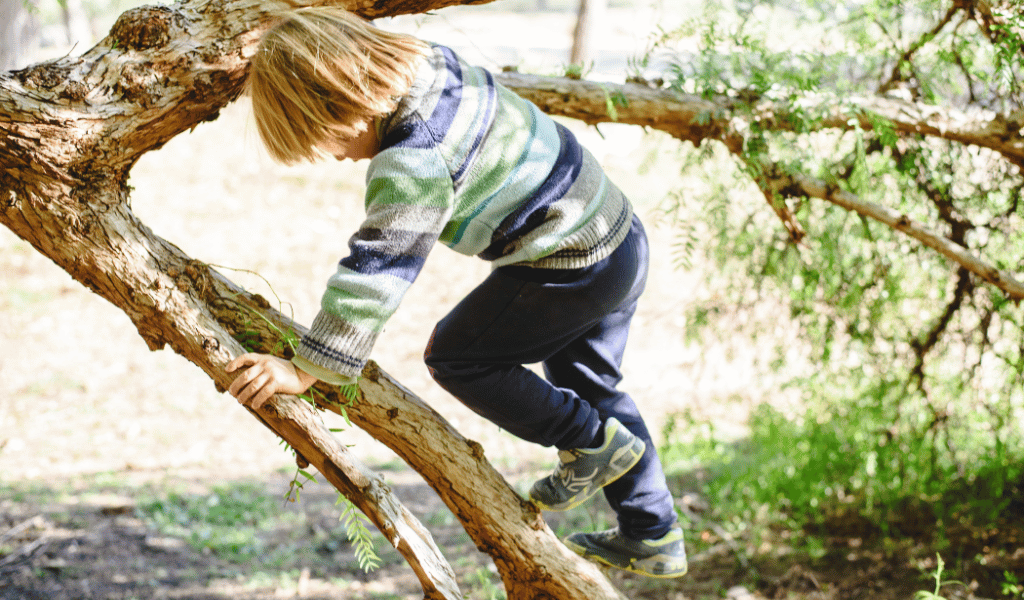Early years educators understand the importance of children’s play for their learning and development. The role of adults is to provide a safe environment, which allows them to constantly challenge themselves, solve problems and be brave. Children need risky play!
In recent years, society has become increasingly risk-averse with the media prompting concerns over child protection and health and safety scares. Children play outdoors less and public playgrounds are often devoid of challenge and excitement. Consequently, many children have few opportunities to experience risk or expel excess energy. Adults tend to remove all possible risks, for fear of litigation.
Of course, it is essential to do a risk assessment that covers potential hazards and assesses the level of risk for the ages and stages of the children attending any early years setting. This ensures that the supervision and support provided keep children safe but does not act as a straitjacket.
Instead of worrying “what could go wrong?”, or where the next accident might happen, educators should take a risk-benefit approach to supporting children on the next step of their journey towards self-reliance, confidence and autonomy.
The Royal Society for the Prevention of Accidents encourages a risk-benefit approach;
“when children spend time in the great outdoors, getting muddy, getting wet, getting stung by nettles, they learn important lessons – what hurts, what is slippery, what you can trip over or fall from.”
Steps are still taken to minimise risk, but it is not completely removed. For example, children should be told not to touch nettles because they ‘sting’, and given time and support to recognise what a nettle looks like.
If a child happens to touch a nettle, the impact is low. It will sting, but it will not be causing lasting damage. The benefit is that most children will conclude that nettles sting and can make an informed choice next time they encounter a nettle.

It is important for young children to be able to develop self-awareness about their personal abilities and limitations, and about how far they are able to stretch themselves in taking on new challenges. Children will develop a fine-tuned sense of danger, which is linked to their confidence and sense of adventure. It is vital they develop resilience and the ability to assess risk and keep themselves safe. The best way to do this is to allow them to learn through experimentation as they play.

With adequate supervision, the risk of a child falling is low and the risk benefit high.
Remember that there is an element of risk in every new experience a child encounters, even approaching another child as a potential ‘new friend’ has the potential to go wrong. It takes practice and the development of self-regulation to cope with failure. Children need to be confident enough take that risk in the first place.
Think back to the play you enjoyed as a child, chances are that it will have involved an element of risk that will have thrilled and exhilarated you. Whether running too fast down a steep hill, jumping from a height, or trying to avoid bruised knuckles when playing conkers. You will remember those ‘risky’ moments for the way they made you feel and the fun you had.

About the author
Melanie Pilcher is the Quality and Standards Manager at the Early Years Alliance.
Melanie Pilcher – Taking a risk benefit approach to children’s play